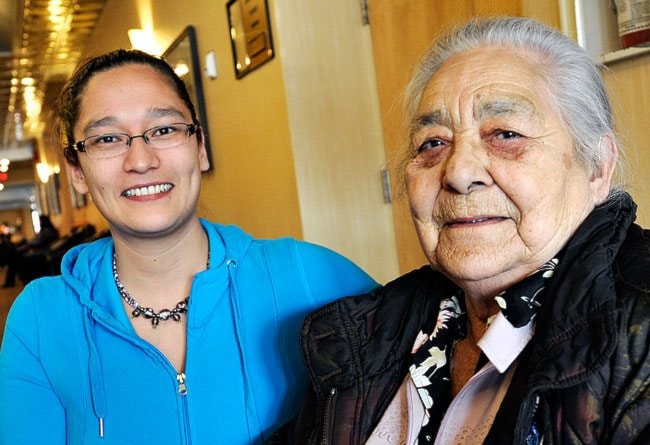Yukon First Nations want to shut down chinook fishing on the Yukon River.
“We want to stop fishing, period,” said Cora Lee Johns from the Ta’an Kwach’an Council. “We are hoping that everybody along the Yukon River can agree to this.
“Teslin has done it for two years now, why can’t everyone else?”
This appeal was made at a four-day meeting in Whitehorse this week between Alaskan and Yukon delegates of the Yukon River Panel.
The unified First Nations made other demands as well - like compensation.
Roberta Joseph was the first one to mention money.
“We cut back every year only to see a more devastating run the next year,” said the Tr’ondek Hwech’in member, mentioning that last year their First Fish Camp only took one, single salmon. The program takes the community’s youth out on the river to catch their first fish, then brings them to a traditional fish camp to teach them how to harvest the salmon.
The money would be used to purchase salmon so the traditional teachings could continue, said Joseph.
She also mentioned the $5-million relief fund the US government gave to Alaskan fisherman on the river at the end of last summer.
The money was compensation for years of low runs and helped fisherman buy equipment that meets new conservation regulations, like nets with smaller mesh.
“People should be compensated to cut back, not to get smaller nets to keep fishing,” Joseph said. “If we keep fishing, there’s not going to be anymore fish to fish.”
The idea is to give the salmon a year or two to replenish its stock, said Johns. Human involvement, including invasive research - like clipping fins - puts stress on the fish and the more stress, the less likely the chinook numbers will go up, she said.
There is no way fishing will stop completely all along the river, said Andy Bassich, a subsistence fisherman from Alaska.
“It’s been brought up by a few elders on the Alaskan side, but quite frankly, it will never happen,” he said. “There’s a tremendous dependence on the fisheries in Alaska for subsistence needs. Many of the people in the villages have no other source of food. And there’s no other way for them to be funded.”
We need to get people to shift to other resources, like other salmon species, that are not in critical condition, he said.
But for some areas along the river, that’s just not an option.
Bassich, and others, are trying to educate users on the ground about the state of the chinook run, the need to conserve and other options they have. He filmed the entire meeting so he could bring it back to the communities.
“The Canadians are ten years ahead in conservation and stewardship,” he said. “It’s a great model for us, but it’s a slow process. It’s adapting. Evolution takes time.”
But for people like Teslin Tlingit elder Pearl Keenan, cutting back on fishing hasn’t necessarily been a choice, in recent years.
Teslin is the end of the road for the chinook migration and the decline in stocks has been noticeable there.
“When we see those salmon, we are so excited to see them come home again,” said Keenan. “But we have watched in the last 10, 15 years, the salmon going down and down and down. And it’s been a hard fight for us as Tlingit people along the river. It really is a hard thing to look at and see that happen.
“Aren’t we educated enough to see that we can help it?”
Not a sound was made in the entire conference room at the Westmark Hotel.
No one moved.
Keenan, standing at a microphone, looked at everyone sitting around the large U-shaped tables.
She said one last thing before thanking them for listening and wishing them a safe journey home.
“Cut the commercial fishing out. Let them bypass. Give the salmon three or four days run. There has to be a limit.
“You can push for that limit,” she said. “Your life doesn’t depend on it.”
As she started her slow, fragile walk back to her table, the entire room stood up and clapped.
Allowing the first pulse of salmon through, without opening any fisheries, is a highly likely scenario, said John Linderman, the Alaskan Chair of the panel.
But just because we get more fish to the spawning grounds in Canada, doesn’t guarantee we will see more fish the next year, he said.
There have been years in the past when higher numbers of adult fish have made it through and the following year’s return was lower than ever, he said.
The projections for this year’s chinook run will mark the fifth year of record-lows.
The total run count is estimated between 130,000 to 180,000, said Linderman. That means the number of chinook that managers hope to let through to Canada is between 42,500 to 55,000, the same as last year.
“The salmon are a natural resource that we all want to see grow,” said Johns. “We’re all involved. We’re all in it.”
Contact Roxanne Stasyszyn at
roxannes@yukon-news.com
